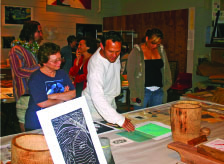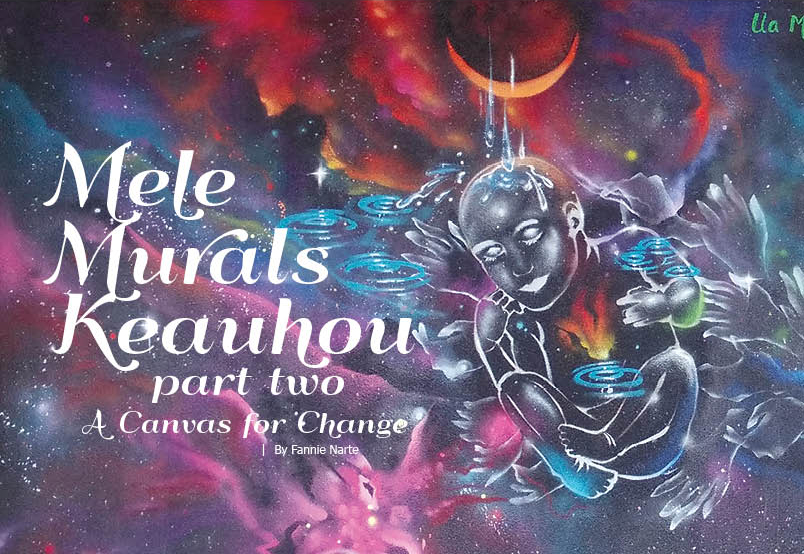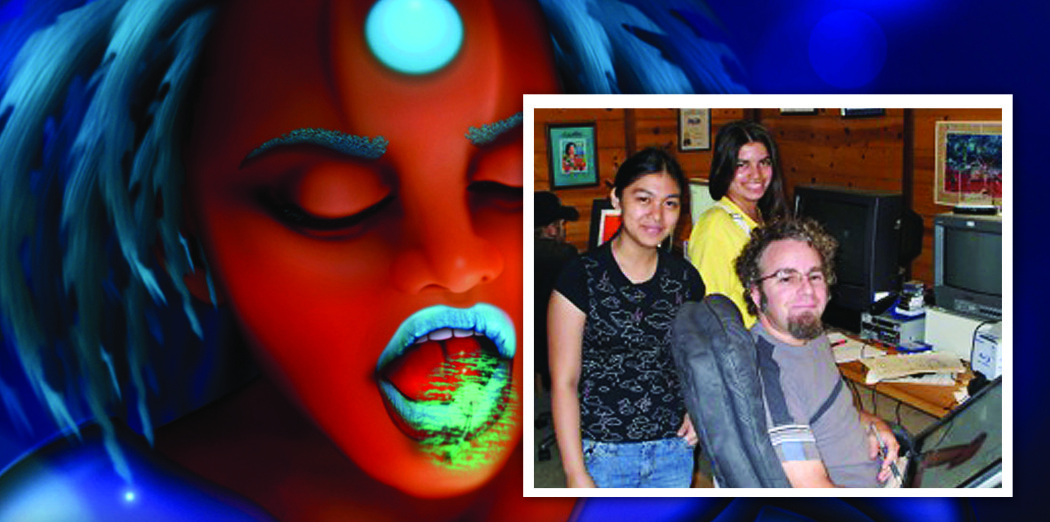New School for Native Hawaiian Fine Arts is Born

By Kauanoe, HOEA Project Director
PIKO, a gathering of over 100 indigenous visual artists, held during the summer of 2007 in Waimea and two other Big Island locations, awakened many to the realization that there are too few venues for indigenous Hawaiian arts. At the gathering, Maori artist, Steve Gibbs, openly expressed his dismay at finding that local support for Hawaiian art “was 25 years behind” in developing. Many of the gathering’s participants concurred. It presented a challenge for Hiko’ula Hanapi, president of Hanapi Keomailani Foundation (KHF).
Many years ago, Hanapi had the dream of starting a school of Native Hawaiian arts, and this was just what he needed to lead a team in writing a grant proposal to start a school of fine arts for emerging Hawaiian artists.

HOEA: Hawaiian ‘Ohana for Education in the Arts was born. In October 2008, the Keomailani Hanapi Foundation (KHF) received a federal grant from the Administration for Native Americans (ANA), to pilot the school of fine arts in South Kohala at Waimea. It is Hawaii’s first independent Native Hawaiian school of fine arts.
HOEA opened its doors to 30 haumana (students) on May 25, 2009, on the grounds of Hawai’i Preparatory Academy, under the watchful eyes of Mauna Kea, bedecked in a lei of clouds. The morning’s protocol included pule (prayer) and ‘oli (chants) to the Creator and to the ancestors. Two flanks of participants: kumu (teachers) and community elders and haumana faced each other. Calls of welcome were made by the kumu and the elders. Responses were returned by the haumana. The flanks approached each other until two flanks turned into a unified circle. Permission was granted to enter HOEA’s doors; and a Native Hawaiian school of fine arts was born. HOEA took its first breath—ha.
At the heart of the curriculum was the Hawaiian teaching-learning concept of ‘imi haku. The concept is likened to the adage, “when the student is ready, the master appears.” In Hawaiian cultural context, it means, “to seek a master, under whom one can learn a skill at the master’s side. It was the master’s responsibility not to allow carelessness to enter into the making of an art form. It was a practice of strict but nurturing transference of knowledge and skills from master to student.
HOEA’s Studio Program consisted of two contemporary visual arts courses and two traditional art courses. A team of highly respected master kumu came together. Stacy Gordine, master carver and jewelry maker from New Zealand, taught jewelry making. Hawaiian master artists taught the other courses. Painter and printmaker Harinani Orme came from Honolulu to head the printmaking studio. Wood-turning was taught by the father and son team of Solomon Apio and Alani Apio from Ewa, O‘ahu and Kailua, O‘ahu respectively. Kala Willis from Keauhou, Hawai‘i, taught the art of carving pahu niu (coconut drums). Students learned the art of pohaku, stone carving, from Hanale Hopfe of Wai‘anae, O‘ahu. Kapa masters included the mother-daughter team from Waimea, Marie McDonald and Roen Hufford. Kaua‘i’s Sabra Kauka, and Ka‘u artists, Teresa Reveira and Joni-Mae Makuakane-Jarrell completed the roster of kapa instructors.

These media were chosen because of their commercial potential for HOEA’s haumana to become successful full-time artists or to supplement their incomes after they exited the program. It was also the hope of KHF and the HOEA staff that haumana would return to their home communities to start cottage industries using the skills that they would have learned at HOEA, thus affecting the economy of those communities in positive ways.
Two other components augmented the Studio Program. “Business of Art” workshops taught students to develop art portfolios, improved awareness and understanding of business practices, and informed students how to prepare art for exhibits and for sales. A four-day HOEA Market event, scheduled for October 1-4, 2009, at ‘A‘ole Minuke Park in Waimea will allow HOEA haumana to exhibit and sell their artwork. Other Native Hawaiian artists will also be invited to sell works of fine art and emerging Native Hawaiian fashion designers to debut their collections at the HOEA fashion show. This event supports the intent of the grant to develop Waimea into a mecca for buyers and collectors of Hawaiian art made by Native Hawaiians. Those three components of HOEA will have constituted an integrated system of art education, which addresses KHF’s mission of, “increasing the number, visibility, and accessibility to Hawaiian art and artists.”
Organizers are hoping to elevate the quality of contemporary and traditional Native Hawaiian art.
Another important practice woven into the project’s certification requirements was volunteerism. HOEA haumana were asked to express their gratitude to their master kumu by sharing what they had learned from them to others. Haumana taught their new skills and knowledge to school groups, halau hula, church groups, community agencies, and to visitors at sites in the National Parks system such as: Volcanoes National Park, Pu’uhonua o Honaunau, and Pu’ukohola Heiau.
HOEA was chosen as the name for this KHF-ANA project because of its kaona, or underlying meaning. On one hand, hoea means, “let’s get started.” Ho’ea also means, “to arrive.” For Hanapi and KHF, it is both. ❖
For more information about HOEA, go to their website or call the HOEA office at 808.885.6541.


